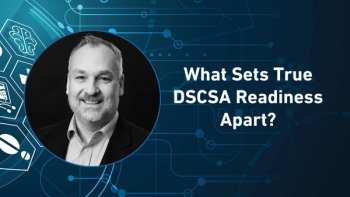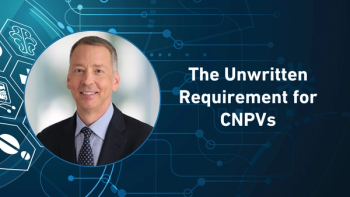
- Pharmaceutical Commerce - July/August 2012
Maintain your integrity: manufacturers and the 340B integrity provision
It has been more than two years since the passage of the Affordable Care Act, and pharmaceutical manufacturers have faced some difficult challenges involving changes to Medicaid calculations, a new Medicare Part D coverage gap discount process, and challenges with the Sunshine Act and the 340B integrity provision.
While some of those areas have received a great deal of scrutiny by the industry and media, the crucial nature of the 340B integrity provision, and what it means to pharmaceutical manufacturers, has been largely ignored.
In many organizations, only a handful of people even understand the 340B program and how it works, let alone the risks posed to a pharmaceutical manufacturer in the event of 340B pricing violations.
A history of the 340B Drug Pricing Program
Let’s start by understanding why the 340B Drug Pricing Program actually exists and how it came to be. The origin of the 340B program can be traced back to the Veterans Health Care Act of 1992, and is spelled out in Section 340B of the Public Health Service Act. The intent of the law was to ensure that safety net providers would be able to purchase drugs at heavily discounted prices in order to reach more eligible patients, and provide more comprehensive services. The law forced manufacturers that participate in the Medicaid Rebate Program to provide outpatient drugs at reduced prices to safety net providers.
These safety net providers are commonly referred to as covered entities, and are made up of disproportionate share hospitals, federally qualified health center look-alikes, and qualified hospitals. The reduced price provided to the covered entities, also known as the 340B ceiling price or PHS price, is calculated on a quarterly basis by deducting the Medicaid Unit Rebate Amount (URA) from the Average Manufacturer Price (AMP).
The program is administered by the Office of Pharmacy Affairs (OPA), a division of the Health Resources and Services Administration (HRSA), which itself is an agency of the US Department of Health and Human Services.
The pricing loophole
Covered entities have largely benefited from the 340B Pricing Program, but on occasion they purchase products at a preliminary price and are charged too much for the product. This is usually because companies need to provide a 340B ceiling price at the time of order even though the calculation requires elements of the URA that are not finalized until several quarters later.
Therefore it is likely that the ceiling price will need to be restated long after a covered entity has purchased the product. If the covered entity purchased the product at a price that was higher than the final ceiling price, it results in an overcharge event and a refund is due (see diagram). If the covered entity purchased the product at a price that was lower than the final ceiling price, it results in an undercharge event and the manufacturer could potentially claim a credit. However, since the original law provided no clarification on how to manage overcharges and undercharges, it was up to the manufacturer or covered entity to manage any refund event.
Enter section 7102
The Affordable Care Act has had some profound impacts on the 340B Pricing Program. One of the more crucial items that has shaken government pricing and contracting departments has been the section of the law that requires “manufacturers to issue refunds to covered entities in the event that there is an overcharge event by manufacturers.” When a refund event occurs, the manufacturer must provide an explanation letter to the secretary, explaining why and how the event occurred, how the refunds will be calculated, and who will receive the refunds. The law further states they must do this “within a reasonable period of time.”
Furthermore, any manufacturer that “knowingly and intentionally charges a covered entity a price that exceeds the maximum applicable price” will face a civil monetary fine. While there are still some ambiguities on how the fine would be calculated and how it would be administered, it is clear that manufacturers now must ensure that they are in compliance for any overcharge event. Unfortunately for the manufacturer, the law makes no mention of undercharges and how they should be handled.
340B compliance challenges
Pharmaceutical companies are faced with some daunting challenges based on the Affordable Care Act. Here are some of the common questions a pharmaceutical manufacturer must answer on their way to compliance with the 340B integrity provision.
How do I prepare for an overcharge event?
Manufacturers need to make certain that their government pricing and contracting departments and systems are fully harmonized. That way the contracting team responsible for calculating refunds is alerted when a 340B ceiling price recalculation occurs.
What about undercharge events?
The law only references overcharges, and while it makes sense that manufacturers should have the right to reclaim amounts for undercharges or net the amounts, a majority of manufacturers have not done so. Some manufacturers have required their contracting departments to calculate undercharge events, but not claim them. This is mainly done to gain visibility and report on the amount that has been lost b y the manufacturer due to the undercharges.
How often should I calculate the refunds?
There has been no clarification on “a reasonable period of time.” However, it is best to have a system that provides the flexibility to support any period calculation. It is common for manufacturers to calculate 340B refunds on a quarterly or yearly basis, but manufacturers should make sure that they have a system that can support a refund once a price recalculation occurs.
How should I ensure payments get back to the covered entities?
It is the manufacturer’s responsibility to get the payments back to the covered entities. This can be a herculean task for many, but there are several options: cut checks directly for each of the covered entities, send credits via the wholesaler to the 340B-covered entities, or utilize a third party to make the payments. Manufacturers should make sure that their system can support those three options or even a hybrid approach. Finally, if a manufacturer is using a proxy to make the payment, it must be sure that it has the ability to confirm that the refund amounts have made it to the covered entity.
What are the civil monetary fine amounts?
At this point, the law only states that the fine is $5,000 per instance, and there has been no further guidance on the penalty. It is likely that fines will be in line with past Medicaid penalties, and manufacturers could also expect thorough audits of their pricing and contracting processes.
Approaches
Over the past few years, four major options have been employed by both large and small manufacturers to address the 340B refund calculation process. These options include the following:
The manual approach: Many companies find themselves in a situation where they must manually identify the transactions and refund the covered entities. The manual approach is suitable if you have limited products and transactions that require adjustments. However, any company with thousands of monthly transactions should avoid this approach. One mid-size company had a contract analyst work for two weeks for a user to identify, adjust and calculate 340B refunds due to covered entities.
Outsource the process: There are companies and organizations that offer processing services that will calculate 340B refunds, and deliver payments to the covered entities. Some of these companies already have covered entity details and identifiers in their possession, and can quickly turn around a payment. This is an attractive option for a company that’s short on resources or lacks the accounts payable structure needed to make numerous payments. However, sometimes this can be a costly process if the outsourcer needs to spend time cleaning up and resolving transactional data.
Semi-automate the process: In some cases a company can pull the transactions from its current system using a query against its contracting database or by generating a report. The data can then be fed back into the system to calculate the refund in a 340B scenario. This process can be effective, but might require additional technical resources and may be difficult to manage if a manufacturer encounters further recalculations.
Fully automate the process: Software vendors can provide features in their contract management systems that will automate this process. This approach will give manufacturers a solution within their current contracting process that is configurable and will support any changes to the 340B Discount Program that might occur.
Recommendations
So where do you go from here? Many companies have utilized solutions like the Revitas suite of Enterprise Revenue Dynamics (ERD) offerings to achieve optimum commercial, financial and industry compliance—including their 340B refund issue. If you are still deciding what the best approach is for you, here are some recommendations I like to give to manufacturers.
Harmonize your team. Ensure that the team members for government pricing, legal, contracting and IT are all aligned, and meet on a regular basis. It is important that there be an alert or notification process in place that will broadcast a PHS price recalculation event to all stakeholders. Make sure your legal group is involved in discussions about netting undercharges with overcharges. This is a decision that should not be made unilaterally by a government pricing or contracting group.
Understand your past recalculations. It would be wise to identify any past refund events that were not addressed, and see if any overcharges were incurred by 340B-covered entities. If any overcharges are uncovered, they should be paid promptly.
Identify the solution option that works best for you. While some companies may be able to effectively manage the 340B refund process with surplus processors or temporary workers, others might not have this luxury. Manufacturers should understand the scope of their current and potential recalculation events, including the number of transactions and the resources available to process them, before deciding on a solution.
Educate your senior management. I am constantly surprised by how few executives understand the workings of the 340B program and the potential fines that can occur. Providing an overview, educational materials on the program, or a business value assessment may help your department procure resources that are needed to help manage this process.
While some areas of the 340B integrity provision are still awaiting clarification from the OPA, there is enough information in the mandate that makes it clear that pharmaceutical manufacturers must make certain they calculate refunds owed to covered entities. Waiting for clarification around disputes and fines is no reason for a company to put off developing its 340B refund strategy and processes. Delaying will only open a company to potential fines and further examination of its contracting practices by government auditors.
ABOUT THE AUTHOR
Joe Marttila is Senior Director of Life Sciences Solutions and Strategy at Revitas, a provider of integrated Enterprise Revenue Dynamics (ERD), solutions for contracts, pricing, and compliance that drive higher profitability and lower risk. For more information, visit revitasinc.com.
Articles in this issue
over 13 years ago
People on the Move-July/Augustover 13 years ago
Social media sites are stuck on a plateau among physiciansover 13 years ago
2012 PDMA Sharing Conference previewover 13 years ago
The clear and present danger of counterfeit drugsover 13 years ago
More than just apps: how the cloud helps meet operational goalsNewsletter
Stay ahead in the life sciences industry with Pharmaceutical Commerce, the latest news, trends, and strategies in drug distribution, commercialization, and market access.





